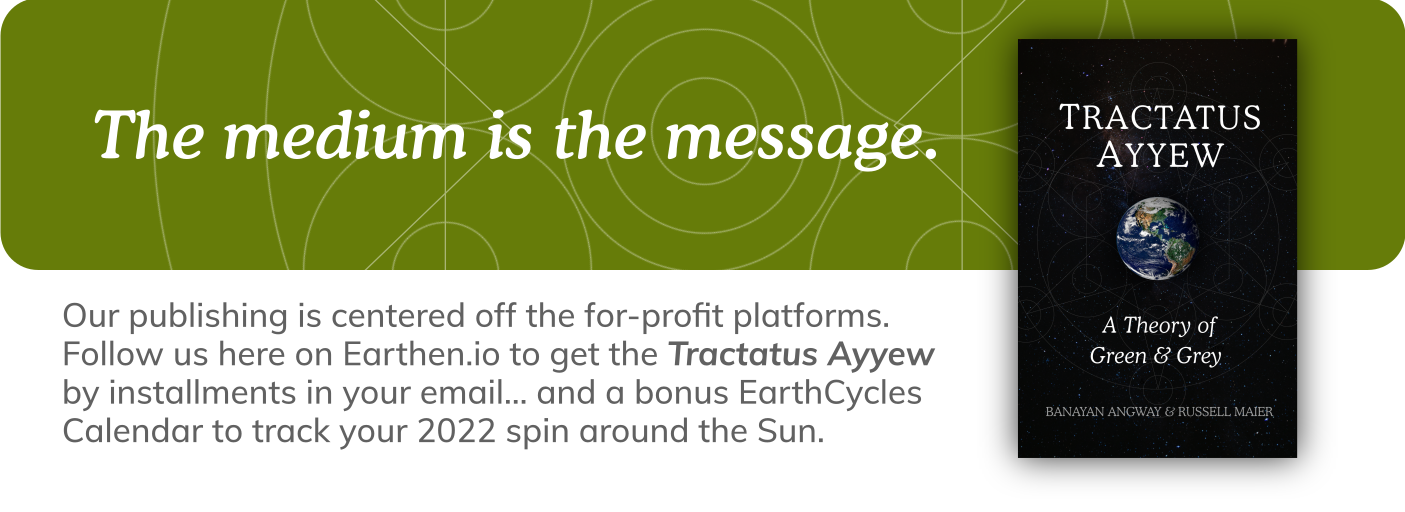Imagine
Imagine a world where the very way we live is steadily enriching the ecosystems in which we are immersed.

IMAGINE A WORLD where the very way we live is steadily enriching the ecosystems of which we are part. It is a world where our households and communities, just by thriving, make the biosphere a more abundant, vital, vibrant and hospitable home for us and our fellow species as kindred companions. In this world, no longer do we strive to merely minimize our ecological harm— instead, by overpaying our ecological debts, we strive to maximize our contribution. Here, our processes are planned not just as lines and circles-- but as cycles and spirals. Here, no longer do our enterprises account only for only their finances— instead they account equally for their ecological give and take just as they do their revenues and expenses. Here, no longer do we simply extract carbon and mine minerals— instead we ensure that we systematically sequester more than we take. Here, no longer are our spaces closed to our fellow species, but are open to their participation. As we live in this common home, the awareness of our ecological interconnection ever augments, and with it, the sync of our cycles of enterprise and ecosystem, economy and biome— a harmony rising up with us towards the stars.
NIGH FORGOTTEN AND DISMISSED by our modern age, the essence of such a world has already thrived in nations ancient and ongoing– cultures and societies that long ago achieved mastery in their ecological integration. To the extent that we can recognize these moments of ecological enrichment, we can imagine our own. And insofar as we can imagine such a green world, its realization is not nearly as distant as many of us despair.
Like our yearning for a song well sung or for colors that compliment, Banayan and I believe that the yearning to contribute ecologically unites us as all. Across culture and continent, as humans we long to add to that which we are part— to improve the teams on which we play; to deepen the harmony of the choirs in which we sing; to enrich the diversity, vibrancy and abundance of the communities in which we belong. Consequently, as the part we play in our local ecosystems and global biomes becomes clearer, so too does our yearning to participate positively in them— to deepen their harmony; to enhance their sync; to enrich their diversity, vibrancy and abundance. Indeed, Banayan and I have come to see that the transition to households, communities and enterprises that are in-and-of-themselves ecological contributions is the next stage of an epic planetary story whose direction is, quite literally, in our hands.
How do we arrive at this beautiful world that we all long to see?
One word:
Plastic.
Therein this persistent and problematic modern material lies our green way forward.
As it must be.
Gardeners have long observed that the problem is always the solution— weeds, pests and pollutants are always, with a shift of perspective, the very nutrients, fertilizers and medicines that bring a struggling garden to thrive.1
Like nothing else, plastic embodies the definitive facets of our modern moment. Derived from ancient carbon that has been extracted and refined, plastic is a direct connection to the Earth’s primordial history. Bought and sold with capital and currency, plastic is a physical manifestation of the petro-capital economy that powers our civilization. Crafted by humans entirely for humans, plastic reflects our modern, human centered society like a mirror.
In this way, that ubiquitous material we all love to hate is in fact a portal.
By facing and embracing our part in plastic's billion year story, we can see our own anew within the same frame.
Then, in stepping through our reflection, we can grasp the great insights awaiting us on the other side.
In the chapters ahead we will do just this.
Up until now, our modern understanding of how to contribute to ecological harmony has been juvenile— our notions human-centered, limited and incomplete. Our contemporary definition of ‘green’ has been limited to simply reducing harm, while the concept of contribution has remained all but un-imagined.
However, through insights gleaned from the planetary origins of plastic, we can see that ecological contribution has been the overwhelming tendency on Earth– a pattern of matter and energy that has permeated all Earth's process, cycles and systems from the very beginning.
As we shall also see, the Earth's pattern has long been discerned by certain societies— nations that rather than deplete their ecosystems, systematically enriched them. However, in so far as these nations have been dismissed and disregarded, modern civilization has not only failed to learn their way of knowing, but has moved on, misguided.
As we shall see, only by recognizing the ecological mastery of these contributive cultures, can we see the metaphysical misconceptions at the heart of our own . Only then, can we excise the error in our modern ideologies-- a way of seeing the world that has destined even our greenest intentions to unfold, inevitably, in a dark shade of grey.
With our gaze clear, we can at last see our place in the biosphere clearly and recognize the creatures around us, and the planet beneath us as teachers. With their help we can then recognize the geometric flow of matter and energy that underlay the Earth's unique planetary pattern. In particular, the pattern of enrichment that sets our planet apart from all the others we've ever observed.
With the Earth's example as a guide we can then move forward on the path of authentic ecological contribution: five Earthen ethics by which we can manage our cycles of energy and matter toward ever augmenting the diversity and awareness of our common home.
Then, not only can we transmute our plastic from a grey harm to a green contribution, we can reorient our households and enterprises, technologies and economies to be just the same.
To begin, let’s address the hate... and the shame.
NEXT: Plastic 1.0

WHAT IS THE TRACTATUS AYYEW?
A decade ago, Banayan Angway and Russell Maier; an Igorot wisdom keeper and a western philosopher, joined forces to protect the Chico River in the remote Northern Philippines from an inundation of plastic pollution. Ever since, they have continued to explore the pressing modern relevance of indigenous ecological wisdom. Guided by the Igorot Ayyew eco-ethos, they are publishing a systematic theory of green and grey in the form of a philosophical treatise.

Footnotes
1 Bill Mollison, (1988) Principles from Permaculture a Designers' Manual, Tagari Publishers,




